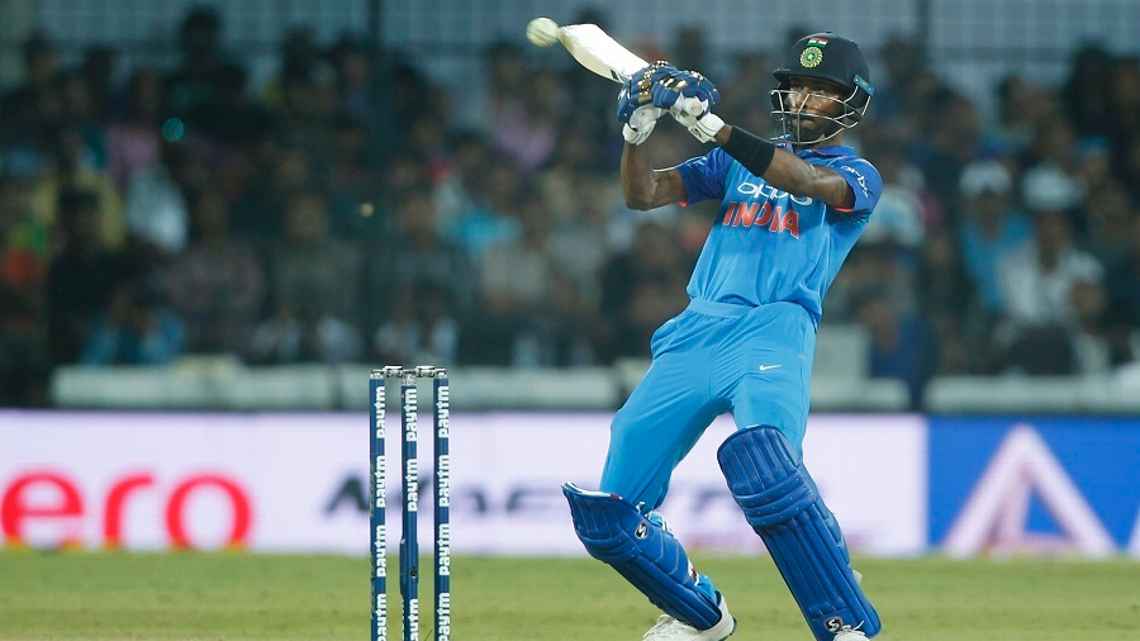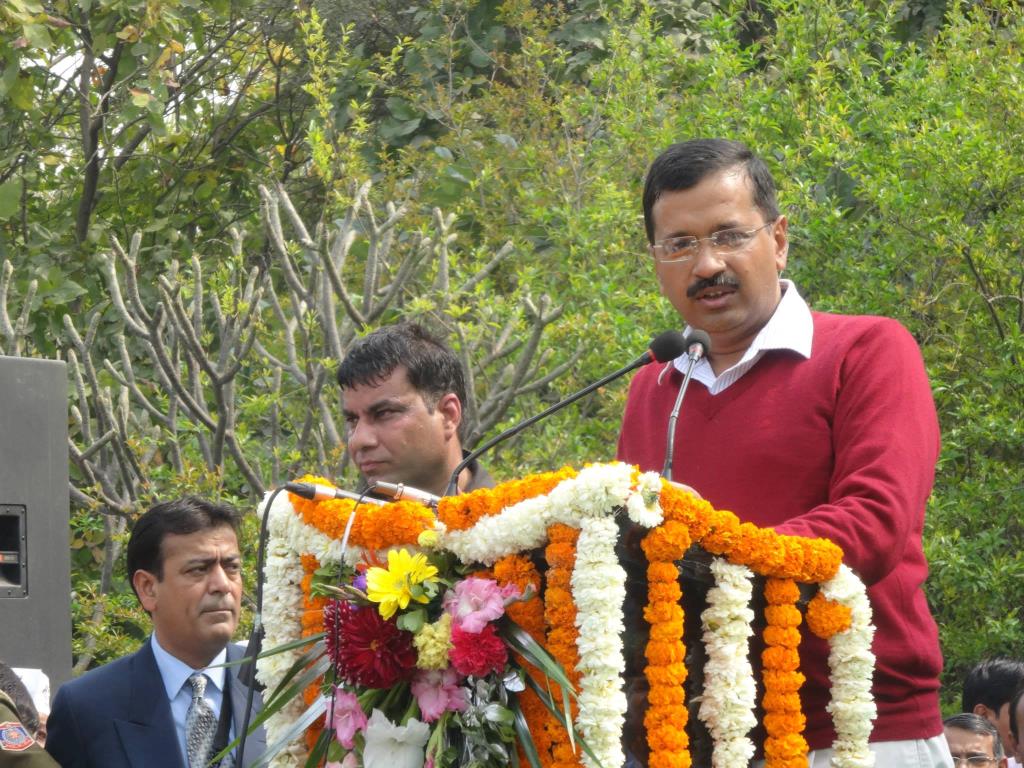September 24, 2017
Brief Scorecard: India 294 for 5 (Pandya 78, Rohit 71, Rahane 70, Cummins 2-54) beat Australia 293 for 6 (Finch 124, Smith 63, Bumrah 2-52, Kuldeep 2-75) by five wickets

Hardik Pandya looks to ramp one to third man BCCI
September 24, 2017
Brief Scorecard: India 294 for 5 (Pandya 78, Rohit 71, Rahane 70, Cummins 2-54) beat Australia 293 for 6 (Finch 124, Smith 63, Bumrah 2-52, Kuldeep 2-75) by five wickets

Hardik Pandya looks to ramp one to third man BCCI
“It will turn around and when it does turn around, it will turn around fast and very well.”
INDORE: David Warner’s optimistic musings on the eve of the third One-Day International between India and Australia must have delivered some solace to fans back home, hurting from the string of losses the team has suffered in recent times.
With their backs against the wall, Australia started off on a brilliant note on Sunday (September 24) at Indore’s Holkar Stadium, with Aaron Finch making a comeback ton to get his side to 293 for 6. But Rohit Sharma and Ajinkya Rahane were in no mood to cut the visiting side any slack, giving India a solid platform that Hardik Pandya used to help them waltz to 294 for 5 in 47.5 over for a five-wicket win.
The result meant India took an unassailable 3-0 lead in the five-match series and the No. 1 spot in the International Cricket Council ODI team rankings, and Australia’s winless streak stretched to eight games in the format.
Rohit had had a quiet series so far, and it was only a matter of time before he exploded against the depleted Australian bowling attack. With Mitchell Starc and Josh Hazlewood unavailable because of injuries, the fast-bowling responsibilities have fallen on the shoulders of Pat Cummins, Nathan Coulter-Nile, Kane Richardson and Marcus Stoinis. To be fair, the trio did a decent job in the first two ODIs, but they faced the brunt of Rohit’s fury in front of a packed house on Sunday.
Rohit smashed six fours and four sixes – one of which landed on the roof of the stadium – in his knock of 71 off 62 balls, denting the bowlers’ confidence early on in the chase. Rahane was equally dominant, scoring 70 off 76 deliveries, hitting nine aggressive boundaries along the way.
The opening partnership yielded 139 runs in 130 balls, before Rohit played a rare mistimed shot to Hilton Cartwright, the substitute fielder, at deep midwicket off Coulter-Nile.
Three overs later, Cummins had Rahane lbw, and Australia saw a ray of hope with India down at 147 for 2.
The express run rate at which India were progressing took a bit of a hit with the wickets going down, but Virat Kohli and Pandya ensured there were no hiccups to follow immediately.
Pandya replaced Manish Pandey at No. 4 after the latter had failed to impress at the position in the first two matches. The move paid off, and the allrounder joined his captain to diffuse the little bit of pressure that the Australians had managed to create.
But Kohli holed out to Finch at long on in the 35th over off Ashton Agar, and the quick departure of Kedar Jadhav, caught behind off Richardson, gave Australia another sniff.
But Pandya continued to attack, hitting sixes at will against the left-arm spin of Agar. Pandey, who had come out to bat at No. 6, took the onus to rotate the strike in the partnership – 78 off 63 balls for the fifth wicket – as India charged towards the series-winning victory.
Pandya was dismissed for a 72-ball 78, caught by Richardson off Cummins in the 46th over, but at that stage India needed just 10 runs to get over the line.
Pandya’s exit paved the way for a perfect ending for the 27,000 fans in the arena, as MS Dhoni walked out amid massive cheers from people anticipating a signature finish from the star. It was Pandey who hit the winning runs in the end to remain not out on a 32-ball 36, though, but that didn’t dilute the excitement one bit.
Earlier, Australia’s batting fizzled out after a promising start from Finch, David Warner and Steven Smith. They were on course for a much bigger total but a late comeback from the Indian bowlers restricted them under 300.
Finch hit 12 fours and five sixes in a knock of 124 from 125 balls to lead a top-order resurgence for Australia after back-to-back collapses in the first two games.
The small boundaries at the stadium and the batting-friendly strip helped Australia’s cause after Smith won the toss and chose to bat even though Finch and Warner were cautious to start with in their opening stand of 70 off 81 balls.
It was only after Pandya castled Warner with an off-cutter that Smith and Finch upped the ante. The two hit regular boundaries to keep the run rate going strong, and from the 14th over till the 38th, the Indian bowlers, who had done so well in the first two games, had no answer to the assault.
Finch reached his eighth century in the format with a boundary off Kuldeep Yadav in the 34th over, and continued to attack before an attempt to further up the scoring led to his departure, Jadhav taking an easy catch at deep midwicket off Kuldeep.
From there on, the Indian bowlers tightened the noose.
Smith hit 63 off 71 balls, but with Glenn Maxwell at the other end, the Australian captain would have hoped to not let the momentum drop. He had categorically mentioned after the loss in Kolkata that the top four had to deliver. Though they collectively racked up 234 runs in this match, their untimely exits hurt Australia.
Smith fell in the 42nd over, to Kuldeep again, and with Maxwell and Travis Head following suit soon after for single-digit scores, it handed India a late advantage. From a point where it looked like Australia could even get close to 350, it suddenly looked difficult for them to even get to the 300-run mark.
Bhuvneshwar Kumar and Jasprit Bumrah bowled brilliantly in the last five overs, and though Stoinis managed to hit an unbeaten 27 off 28 deliveries, Australia were left to rue the fact that they couldn’t kick on the way they would have liked to.
The result sealed India’s sixth bilateral ODI series win on the trot, and propelled them to the No. 1 spot in the rankings ahead of South Africa.
Courtesy/Source: Wisden India
















































































































